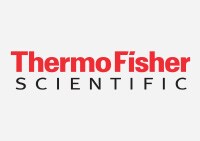Search Thermo Fisher Scientific

Agglutinins
Agglutinin is a substance that cause particles to congeal or clump together, such as an antibody that causes antigens to aggregate by binding to antigen-binding sites of antibodies. Agglutination is a typical, highly specific, and reversible antigen-antibody reaction, often used to particulate test antigens that are usually conjugated to an artificial or biological carrier.
Products (4)
Learn More (15)
Documents & Support
(866)4 Products
Filter
Ulex Europaeus Agglutinin I (UEA I), fluorescein (FITC), is a bright-green UEA I-fluorophore conjugate.
Lens Culinaris Agglutinin (LCA), fluorescein ( FITC), is a bright-green LCA-fluorophore conjugate that is sourced from a common edible lentil.
The Phytohemagglutinin-L (PHA-L) Solution (500X) is a ready to use solution of PHA-L in aqueous buffer.
Bright-green DBA-fluorophor conjugate
Learn More (15)
View all
Detecting low-abundance antigens with even the best conventional dye conjugates can be a challenge, as photobleaching can make it difficult to effectively observe and record staining. The exceptional photostability of Qdot probes conjugates can provide substantial benefits in the detection of low...
The plasma membrane structure is a lipid bilayer that separates the interior of the cell from the exterior of the cell. Here we describe cell membrane markers that outline the cell boundary for fluorescence imaging. Fluorescent labeled lectins (e.g.
Documents & Support (866)
View all
User Guide: Molecular Probes Wheat Germ Agglutinin Conjugates
My cells are very sensitive and need to be kept in media as much as possible. Is it possible to label the plasma membrane with fluorescent wheat germ agglutinin (WGA) in media instead of buffer?

